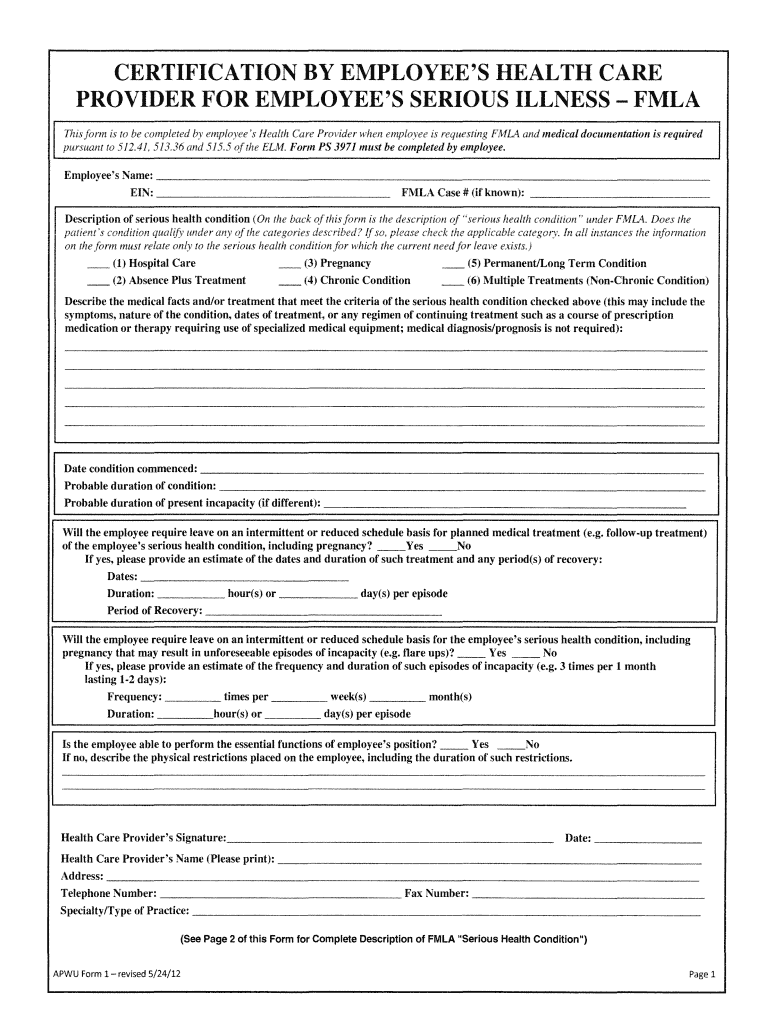FMLA Paperwork: How Long Does It Really Take?

Preparing for an extended leave of absence due to a family or medical reason can be a stressful time. When the Family and Medical Leave Act (FMLA) comes into play, navigating the associated paperwork can seem like an additional burden. How long does it take to go through the entire process of FMLA paperwork? This blog post will delve into the specifics, offering a comprehensive guide to help you understand the timeline involved in the FMLA paperwork process.
Understanding FMLA and Its Paperwork

The Family and Medical Leave Act (FMLA) provides eligible employees with up to 12 weeks of unpaid leave for specified family and medical reasons. When requesting FMLA leave, you must complete certain paperwork to ensure the validity and legality of the request:
- Employee Notice to Employer: The employee must inform their employer 30 days in advance or as soon as possible if the leave is unforeseen.
- FMLA Request Form: This form is used to apply for FMLA leave, specifying the reason for leave, the expected duration, and other pertinent information.
- Medical Certification: The employer can request a medical certification for conditions related to serious health conditions, birth, adoption, or foster care of a child.
- Designation Notice: The employer issues this to approve or deny the FMLA leave request.
📝 Note: The timing for each step can vary based on the employer's policies and the nature of the leave request.
The Timeline for Completing FMLA Paperwork

Here's a detailed look at the typical timeline for each step in the FMLA paperwork process:
1. Employee Notification

- Foreseeable Leave: Employees must provide at least 30 days' notice before the need for FMLA leave. This allows time for paperwork preparation.
- Unforeseeable Leave: If the leave is unplanned (e.g., emergency health issues), employees must inform their employer as soon as practicable.
📞 Note: Communication with your employer is crucial. A verbal notice should be followed by a written request.
2. Submission of FMLA Request

After notifying your employer, you'll need to:
- Submit the FMLA leave request form.
- Provide additional details on the reason for leave, including the expected duration and whether it will be continuous or intermittent.
- Include any relevant medical information or certification, although this step can come later in some cases.
3. Medical Certification

If the leave involves a serious health condition, the following steps are needed:
- Obtain and complete a Certification of Health Care Provider form.
- Return the form to your employer within 15 calendar days of receiving the request.
🏥 Note: Medical professionals have up to 15 calendar days to complete their part of the certification. Extensions can be granted with reasonable cause.
4. Employer Review and Designation Notice

The employer's review process includes:
- Reviewing the submitted forms to determine eligibility and validity.
- Issuing a Designation Notice indicating whether the leave will be designated as FMLA leave.
- This process typically takes up to 5 business days after receipt of all necessary documentation.
5. Clarifications and Recertifications

Your employer might request:
- Clarification or incomplete information on the certification forms.
- Recertification every 30 days or more, if the reason for leave remains unchanged.
The Real-World Timeframe

While each step has its own estimated time, in practice, the full process from notification to approval can take anywhere from 2-4 weeks. Here's what contributes to the duration:
- Employee Preparation: How quickly the employee gathers necessary information and submits forms can significantly affect the timeline.
- Employer Efficiency: The speed of the employer's human resources department in processing and reviewing paperwork.
- Healthcare Provider: The promptness with which medical professionals complete their certifications.
- Intermittent Issues: Any issues with incomplete or unclear documentation can lead to additional time for clarifications.
⏱️ Note: It's advisable to start the process well in advance to avoid any delays in leave approval.
Tips for Streamlining the Process

To make the FMLA paperwork process as swift as possible, consider these tips:
- Be Proactive: Begin gathering documentation and notifying your employer early, even if the leave is not guaranteed to happen.
- Communicate Effectively: Ensure you have clear, open communication with your employer. Ask questions if you're unsure.
- Fill Forms Correctly: Incomplete or incorrect forms can delay the process. Double-check all entries before submission.
- Keep Records: Maintain copies of all documentation and correspondence for your records.
📋 Note: Using employee handbooks or company resources can help guide you through the process, reducing errors and delays.
Understanding the FMLA paperwork process can ease the stress of taking a leave of absence. While the exact duration can fluctuate based on individual circumstances, knowing the steps involved and preparing adequately can help manage your time more effectively. The key is to start early, be thorough, and maintain clear communication with both your employer and healthcare providers.
What if I miss the 30-day notice for FMLA leave?

+
If your need for leave is unforeseen, you should inform your employer as soon as you can. While the 30-day advance notice is preferred, failure to give notice doesn’t disqualify you from FMLA leave; however, it might result in delays or complications in approval.
Can my employer refuse my FMLA leave request?

+
If you meet the eligibility criteria and the paperwork is in order, your employer cannot deny your FMLA request. However, they can question the validity or completeness of the medical certification or your eligibility. Disputes can be resolved with further documentation or recertification.
What happens if my employer does not respond to my FMLA leave request?

+
If your employer does not respond to your FMLA request, this could be a violation of the FMLA. Employees can file a complaint with the Department of Labor for further action or legal recourse.